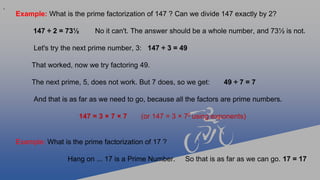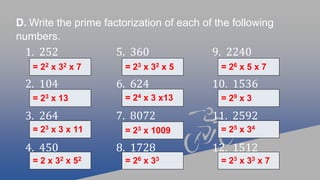The document contains a mathematics program focused on grade 5 concepts, including multiplication, division, prime numbers, and factorization. It provides examples, practice problems, and word problems that require finding sums, averages, least common multiples, and greatest common factors. It also emphasizes the concept of prime factorization and its applications in various mathematical scenarios.





































